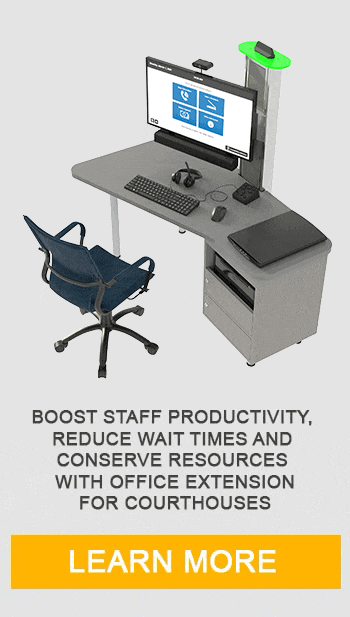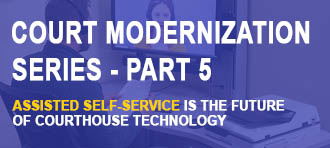1. Patient Check-in
Of course we have to start with the most obvious. When you let self-service kiosks handle patient intake, you free up staff to do higher-level tasks that improve patient experience. It’s low-hanging fruit, but the mechanics of automating patient check-in vary depending on which systems you currently use. Let’s assume you have an electronic health record (EHR) system and/or practice management software. Does it have a built-in check-in application? If so, kiosk integration should be fairly simple. If not, Advanced Kiosks developers will have to create a form to pass the data a patient inputs at check-in on to your software. It’s basically building a bridge between your healthcare kiosk and your existing software system. If you don’t have any of the above, it’s time to research queuing systems. Our cloud-based QLine queuing software checks patients in and keeps them apprised of their wait times. Here’s how it works:
2. Patient Portals
EHR, EMR, clinic management software, patient management system. Whatever you call the tech platform your medical practice runs on, these increasingly cloud-based, hosted software solutions integrate easily with self-service kiosks. So as long as your patients are accessing their accounts to check in, you might as well have them make sure all their info is up-to-date and electronically fill out any required forms. When patients input their own information, you cut down on data entry time and errors. Newcomers can use interactive kiosks to register for your patient portal, setting up online accounts they can access on any device. Self-service isn’t just cost-effective for you, it’s convenient for your patients. They can access test results and other important medical information. Add a kiosk printer, and they can print visit summaries, prescriptions, and treatment plans.
3. Building Directory & Wayfinding
Patients, visitors and vendors will all benefit from lobby kiosks that help them find who they need to see and how to get there. Lobby Attendant software can function as your virtual front desk. Check-in kiosks greet your patients as soon as they enter, and once they’ve checked in, the kiosk will make sure they know exactly where to go.
4. Controlled Entry
Check-in kiosks can also help you make sure everyone in your healthcare facility is authorized to be there. When patients check in at University of the Pacific’s Arthur A. Dugoni School of Dentistry, kiosks print individualized badges with barcodes that must be scanned at the bank of turnstiles to allow entry into the clinic area. Similarly, Southwestern Vermont Medical Center integrated its check-in kiosks with Vendormate credentialing software to verify all sales reps have received background checks, been drug tested and have the proper immunizations before they can enter the hospital.
5. HR Kiosks
Not all healthcare kiosks serve your patients and guests. Human resources kiosks serve your employees. Healthcare staff can use HR kiosks to clock in and out, print pay stubs, request PTO, enroll and manage benefits, and much more. Install HR kiosks in staff break rooms or cafeterias to keep your deskless workforce in-the-know about facility-wide announcements, policy changes and training opportunities.
6. Telehealth: The Future is Here.
All the use cases above help you improve service to the people in your facility, the people coming to you. Telemedicine or telehealth kiosks aim to expand your reach; they go out into the community. Imagine being able to improve the health of patients who have never set foot in your clinic. Video-chat kiosks make real-time, remote consultation possible. Computer kiosks can even be outfitted with medical device peripherals to collect and securely transmit a patient’s vitals (e.g., blood pressure, temperature, weight, pulse) to the remote physician. Major health systems are using telemedicine kiosks to expand digital health delivery to places people go every day, like supermarkets and drugstores. They can also help monitor and manage patients with chronic disease. Telehealth kiosks are a cost-effective way to provide mental health services and addiction counseling to underserved populations in remote rural areas.
Healthcare Kiosks Exceed Expectations
If you’ve been considering a patient check-in kiosk implementation, you may want to expand your vision. Healthcare kiosks are multipurpose, and they can multitask. Contact an Advanced Kiosks project consultant to discuss how kiosks can improve established patient experience and connect with new patients.














